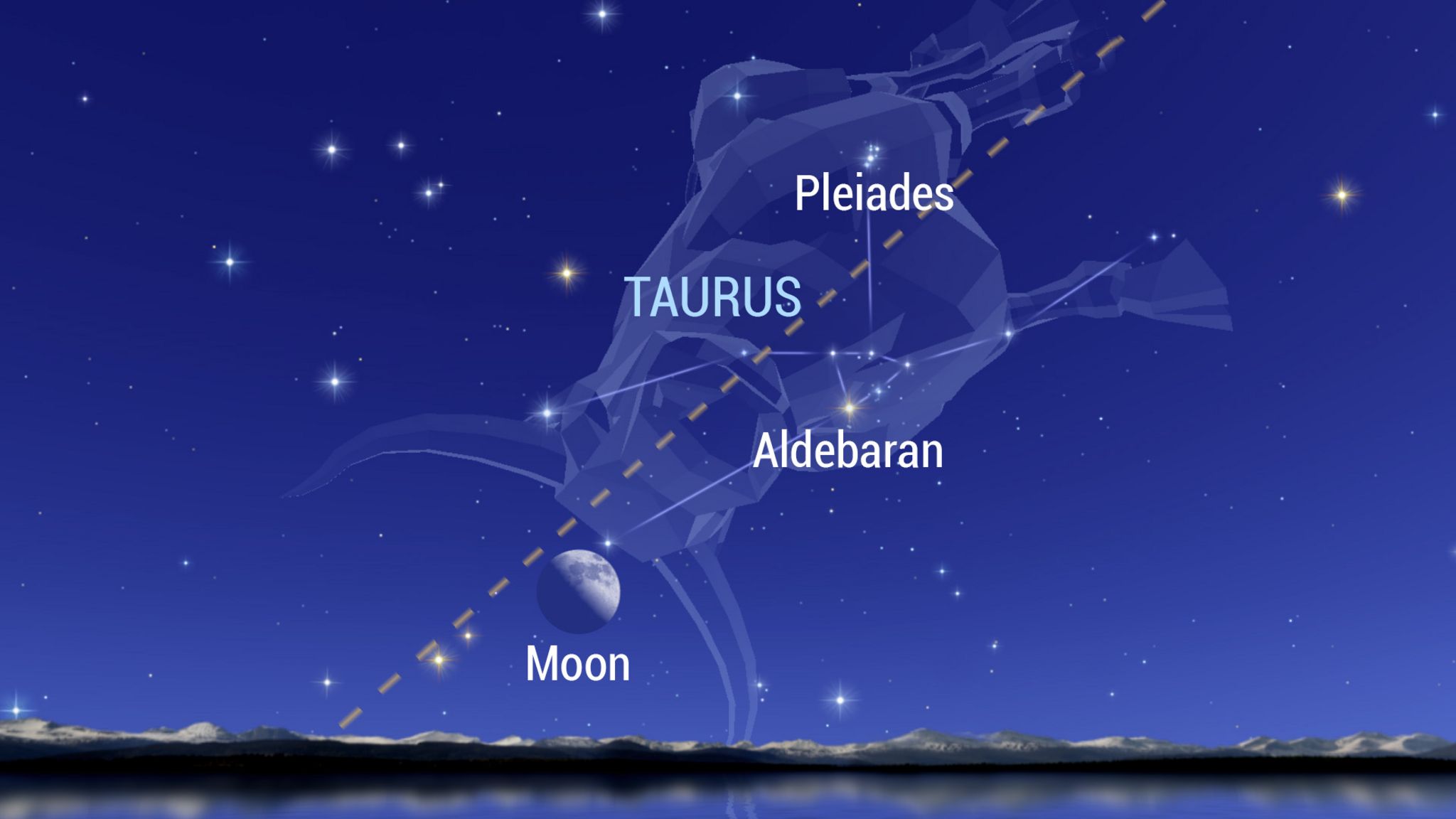The Sky this Week
This week, the moon will entice you to gaze upon it after dinner. It will spend the week waxing fuller while it climbs the western evening sky. When the moon is at this stage of its monthly journey around Earth, the sun is slowly rising over the moon’s eastern horizon. The slanted “dawn” sunlight casts long, deep black shadows to the west (our left) of any elevated feature on the moon – including crater rims, mountain chains, ridges, and fault scarps. For the best views, point your binoculars or telescope along the strip flanking the pole-to-pole line that divides the lit and darkened hemispheres. And remember, when the majority of the side of the moon we see is dark, the far side is mostly lit. In other words, it’s wrong to refer to the part of the moon we never see as the dark side, because it’s only dark half of the time!
On Wednesday evening, the moon will land just below the triangle of medium-bright stars that form the face of Taurus (the Bull). Stargazers in western North America will see the moon approach close to the bright, orange-ish star Aldebaran (the eye of the bull) before both objects set in the west. Wherever you live, look a fist’s diameter to the right of the moon for the Seven Sisters, the small, bright cluster of stars that form the logo for the Subaru car company. The sisters were the daughters of Atlas and Pleione in Greek mythology. We also call this object the Pleiades cluster and Messier 45.
On Thursday morning, the moon will reach its First quarter phase, when it will sit at a 90° angle from the sun and will appear half-illuminated. First quarter moons rise around noon and set around midnight, so they become visible starting in the afternoon. The term quarter moon refers not to its appearance, but the fact that our natural satellite has now completed the first quarter of its orbit around Earth since the last new moon.
On Thursday evening the moon will tickle the toes of Gemini (the Twins). On Saturday night, the waxing gibbous moon will be positioned about a palm’s width to the right (west) of the large open star cluster known as the Beehive or Messier 44 in the constellation of Cancer (the Crab). The moon encounters the cluster frequently because the Beehive is located only 1 degree north of the ecliptic, the great circle around the sky that most solar system objects orbits are close to. To see the cluster’s stars, try placing the bright moon just outside the field of view of your binoculars. The following evening, the moon will hop past the cluster to sit a similar distance to the lower left (east) of the “bees”.
